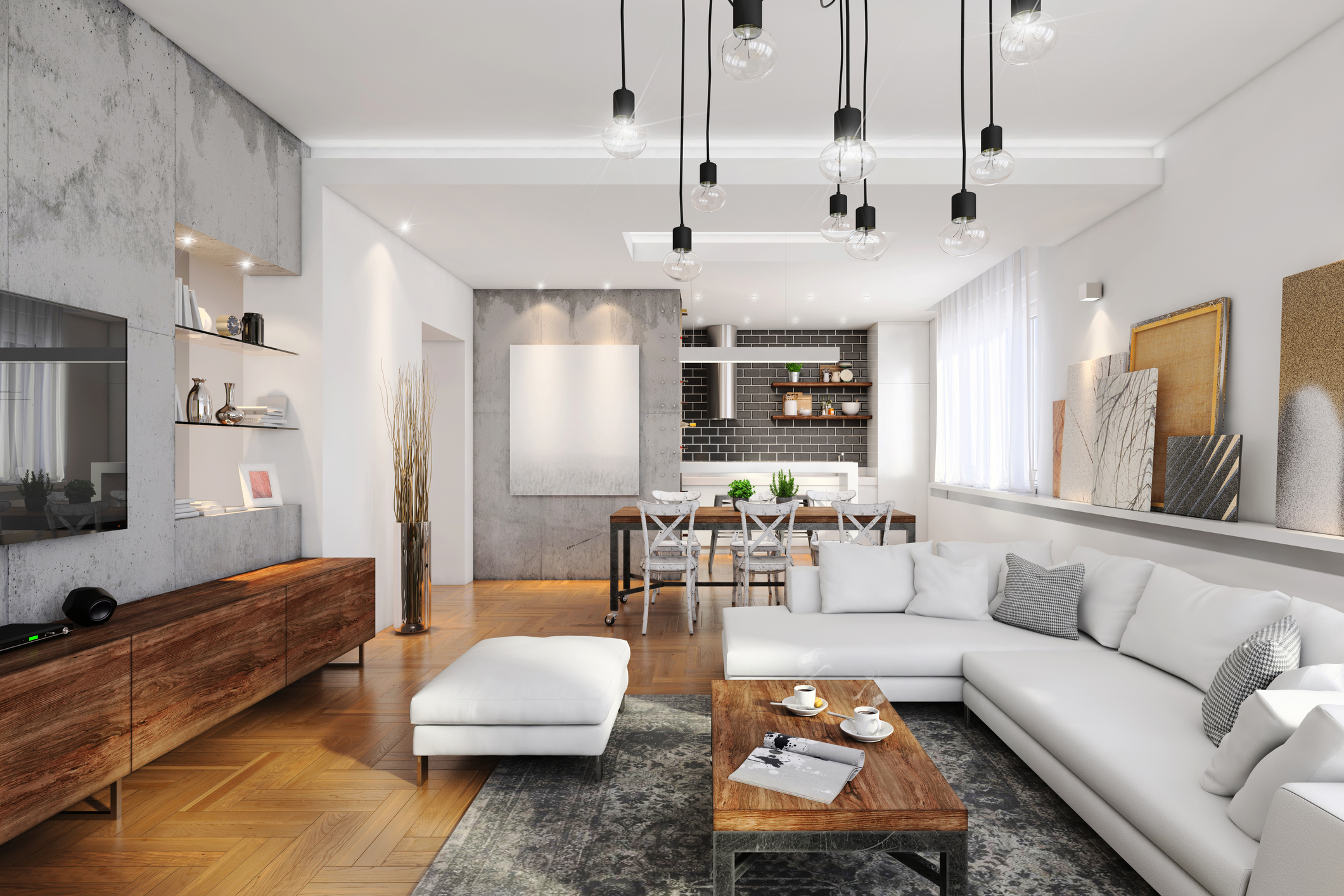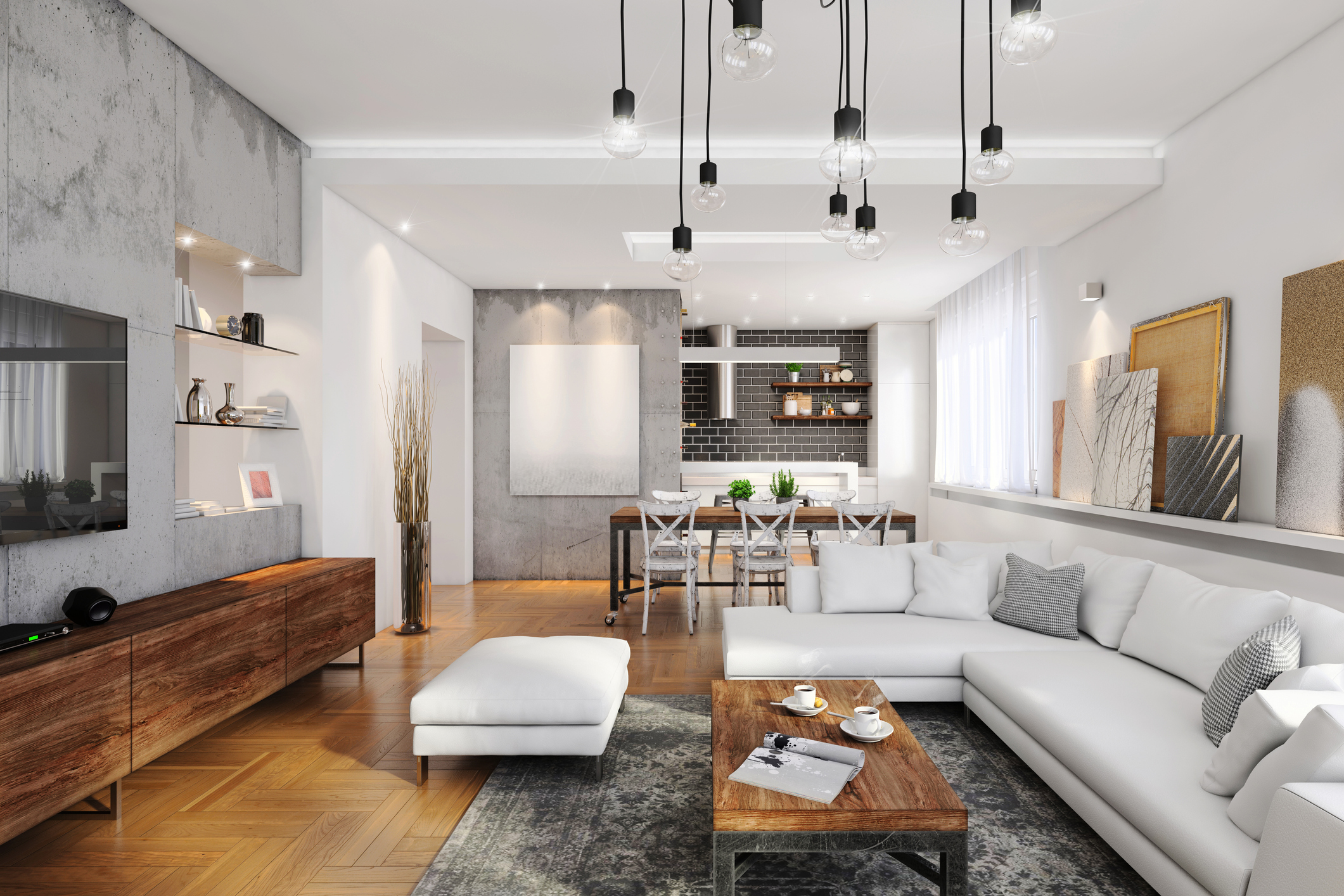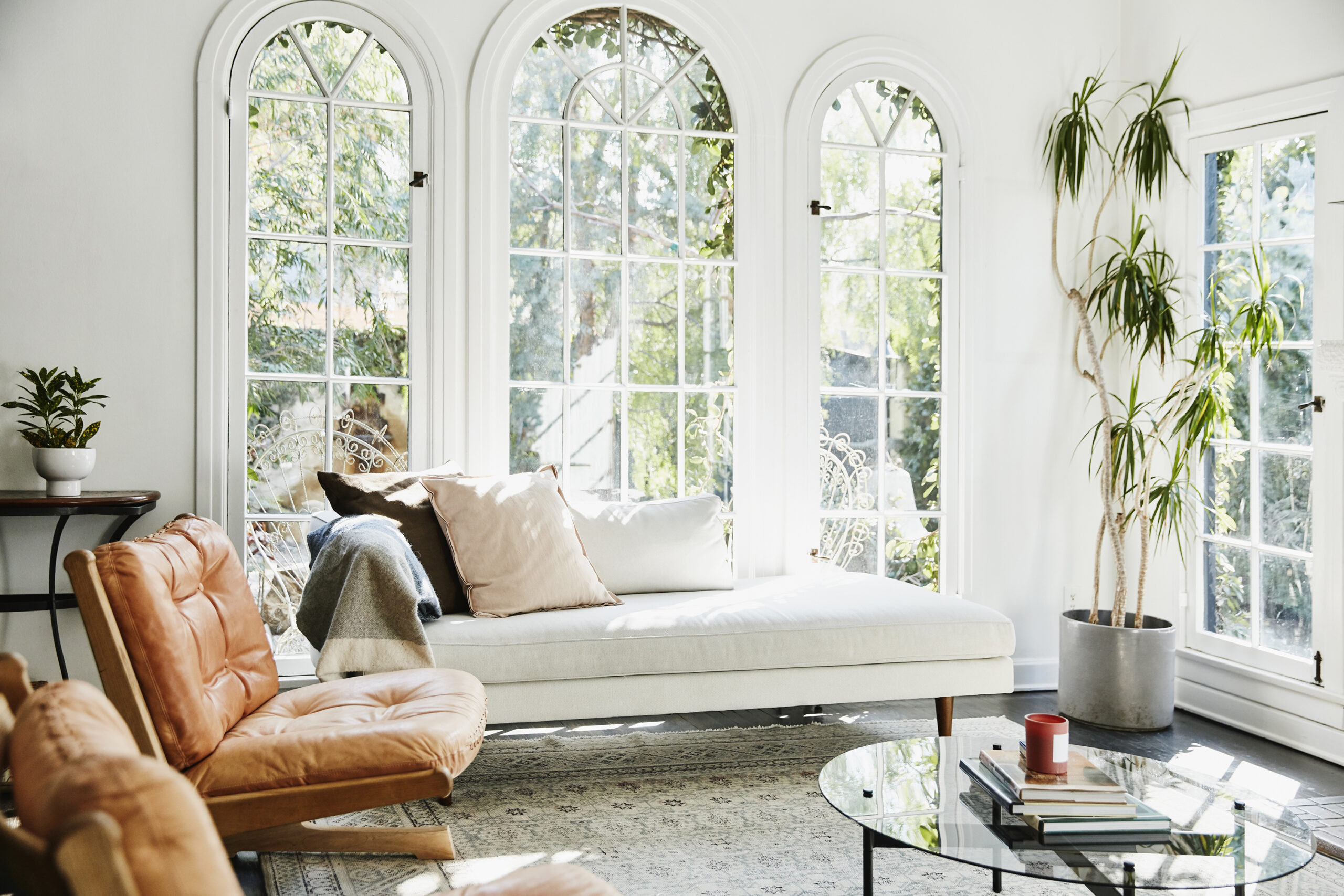Living and dining room renovation

Living rooms and dining rooms are where the family and guests converge so the spaces should be welcoming but also display your personality. From layout to lounge selection, find out how to create a flexible, multi-functional living space that caters for your family situation.

Costs>
Design elements>
Layout>
Windows & doors>
Technology>
Fixtures>
Future proofing>
Mistakes>
Easy fixes>
Costs
For these areas expect to spend $10,000 and $50,000, depending on the size of the space, complexity of design, cost of materials, and whether or not the space requires structural changes to create an open-plan floor plan.
Smaller jobs like repainting and replacing carpet can keep the costs down, but if you are replacing the entertainment system and getting electrical work done, it will increase the bill.
Design elements
The living and dining areas are spaces that need to serve multiple purposes – eating, entertaining guests, relaxing, viewing entertainment and general gathering around. Although it’s a space you’ll definitely want to nail, the good thing about renovating the living and dining areas of the home is that you can make a big impact without huge design and structural changes.
But in other scenarios you may have to knock down walls and bring in a lot of help to create an open-plan area.
8 beautiful living room ideas
Layout
How your living room is laid out will influence how you interact with the space and your family every day, so it comes as no surprise that interior designers have spent plenty of time figuring out what layouts work best. It goes without saying the space you are working with will be dictated by size, as well as the position of doors, walls, and windows, but it’s worth investigating your options before you lock in a design.
Different types of layout design to consider
Open plan – Perfect for families this design opens up the living room to other rooms – usually the kitchen and dining areas – to create a big family space. It offers a benefit in smaller houses making them look and feel larger. However, open plan may make large houses feel vast and empty, and open plan rooms can be difficult to heat.
Focal-point layout – If you have a fireplace or love to sit down in front of the television, then this design is for you. As the name implies, all the furniture is arranged around a central point – typically toward one wall. This setting is ideal if you have installed a big screen television as part of your renovation and suitable for a large L-shape or corner couch.
Broken plan living – If you have a large space, then it’s possible to split the room in two and have one area for lounging and watching television, and another for a dining table or multi-use workspace. This clever design works best in rectangular or large rooms and allows interaction between the areas, but also creates distinct zones for certain activities, without the addition of walls.
Open plan living area ideas
Window and door placement
Make sure you consider where your windows are when you’re mapping out the arrangement of your living and dining areas. Aim to achieve a high level of natural light but in positions that will not impact where you place the furniture.

Home technology
Smart homes are becoming increasingly popular, so when it comes to common areas it would be a big mistake to skip over smart home technology. Electrics can be expensive to retrofit, so to keep costs down arrange your living and dining areas around what is already set up. If you are making changes look at high-tech and sustainable options that will stand the test of time and also reduce your power bill.
Here are some high-tech items to consider:
Home automation
From turning off the lights in your living area to setting your heater to switch on at a certain time, home automation with a central home hub – like Google Home or Alexa – to control everything allows you to set up your devices to carry out tasks without you even having to lift a finger.
Smart power boards
As much as 10% of the energy used in an average Australian home often gets wasted by appliances left on standby. Smart boards are a great investment and work by measuring the electricity flow from each outlet, allowing it to detect when devices are in use and when they are in standby mode.
Smart televisions and speakers
A fully interconnected entertainment unit is the way of the future. It’s worth upgrading your current set up keeping in mind that all the devices should connect seamlessly and even allow sound and remotes to work in different rooms.
(function(videojs) {
var videoId = “5598355628001-17”;
var video = videojs(videoId);
var globalId = “iris_5598355628001_17”;
video.pluginDev(videojs.mergeOptions({}, {
start_up_next: false,
end_up_next: false,
global: globalId,
ssl: true,
thumbs_down: false,
thumbs_up: false
}));
})(window.videojs);>
(function(videojs) {
var videoId = “5598355628001-17”;
var durationElement = document.createElement(‘div’);
durationElement.className = ‘vjs-overlay-duration’;
var durationFragment = document.createDocumentFragment();
durationFragment.appendChild(durationElement);
var video = videojs(videoId);
video.overlay({
overlays: [{
align: ‘bottom’,
content: durationFragment,
showBackground: false,
start: ‘loadstart’,
end: ‘play’
}]
});
video.on(‘loadstart’, updateVideoDurationOverlay);
video.ready(function() {
var isOverlayActive = true;
video.on(‘play’, function() {
if (isOverlayActive) {
isOverlayActive = false;
video.overlay({
overlays: []
});
}
});
updateVideoDurationOverlay();
});
function updateVideoDurationOverlay() {
var myPlayer = this;
if (myPlayer.mediainfo && myPlayer.mediainfo.duration) {
var duration = secondsToMMSS(myPlayer.mediainfo.duration);
durationElement.textContent = duration;
}
}
function secondsToMMSS(totalSeconds) {
var minutes = Math.floor((totalSeconds) / 60);
var seconds = totalSeconds – (minutes * 60);
// remove any decimals
seconds = Math.round(seconds);
var result = minutes + “:” + (seconds
Colours and fixtures
Opt for a colour palette that really sets the mood of your home while also offering the right setting for how you intend to use the space. Beige and white are common choices in dining rooms but unlike bedrooms, these spaces can be bold and bright, so explore your options when it comes to the colour scheme.
Colour options for living and dining room
White – this is the colour to play it safe, but that’s okay if you are looking for a crisp, clean vibe. Think about whether you would prefer a blue cooling undertone, or a warm yellow, if bright white is a little too sterile for your liking.
Blue – interestingly blue is often viewed as a depressing colour and some research suggests it can suppress appetite, but don’t let that stop you if you dare to be different. Dark inky tones can be offset by white skirting boards and ceilings. Softer pastel blues can help achieve a country Hampton-style feel.
Mauve – soft pastel purples, pinks and greys make for a tranquil and relaxed room.
Yellow – while not for everyone a striking canary colour or pastel yellow dining room can create a sense of fun, lightness, and gaiety.
Green – often complimented by white trimmings, either a dark viridian or pastel green decorating scheme can be a refreshing choice.
Grey – if monochrome is your style then using grey and white tones can make a strong statement without being too garish. This also creates a fantastic backdrop for hanging black and white photographs.
Wallpaper – paint is simpler, but a beautiful wallpaper design can give a room the wow factor. But it is worth ensuring the pattern matches the style of the whole house or it may seem out of place.
Future proofing
Longevity is the goal of a renovation as it’s a big investment and a lot of work. Start by asking yourself; does your renovation match others in the local area? Will it suit families now and in the future? Will the changes stand the test of time?
Timeless design elements include:
Open plan livingLots of natural lightGood electrics, smart connectivity and ample power socketsSustainable and energy efficiencySpaces that can grow/adapt with familiesMulti-use spacesDual built-in furniture/storageDesign for comfort and entertaining
Common mistakes
When it comes to living areas there are common mistakes you should be aware of.
Not thinking about where points and television connections should goNot pre-planning to conceal electrical cablesNot choosing the optimal position for heating and cooling appliancesForgetting about storagePlacing furniture in walkwaysNot having easy access to seating areasWindow dressings that are not suitable to the room or difficult to remove for cleaning
Rookie style mistakes you’re making in your living room
Easy fixes
As long as your living and dining area has good bones there is no reason that you can’t simply focus on updating the basics to keep things fresh and new. To get more bang for your buck think about decorating and styling rather than a major renovation. A fresh coat of paint and new flooring – floorboards or carpet – are simple yet effective ways to make a room look better.
The post Living and dining room renovation appeared first on realestate.com.au.
